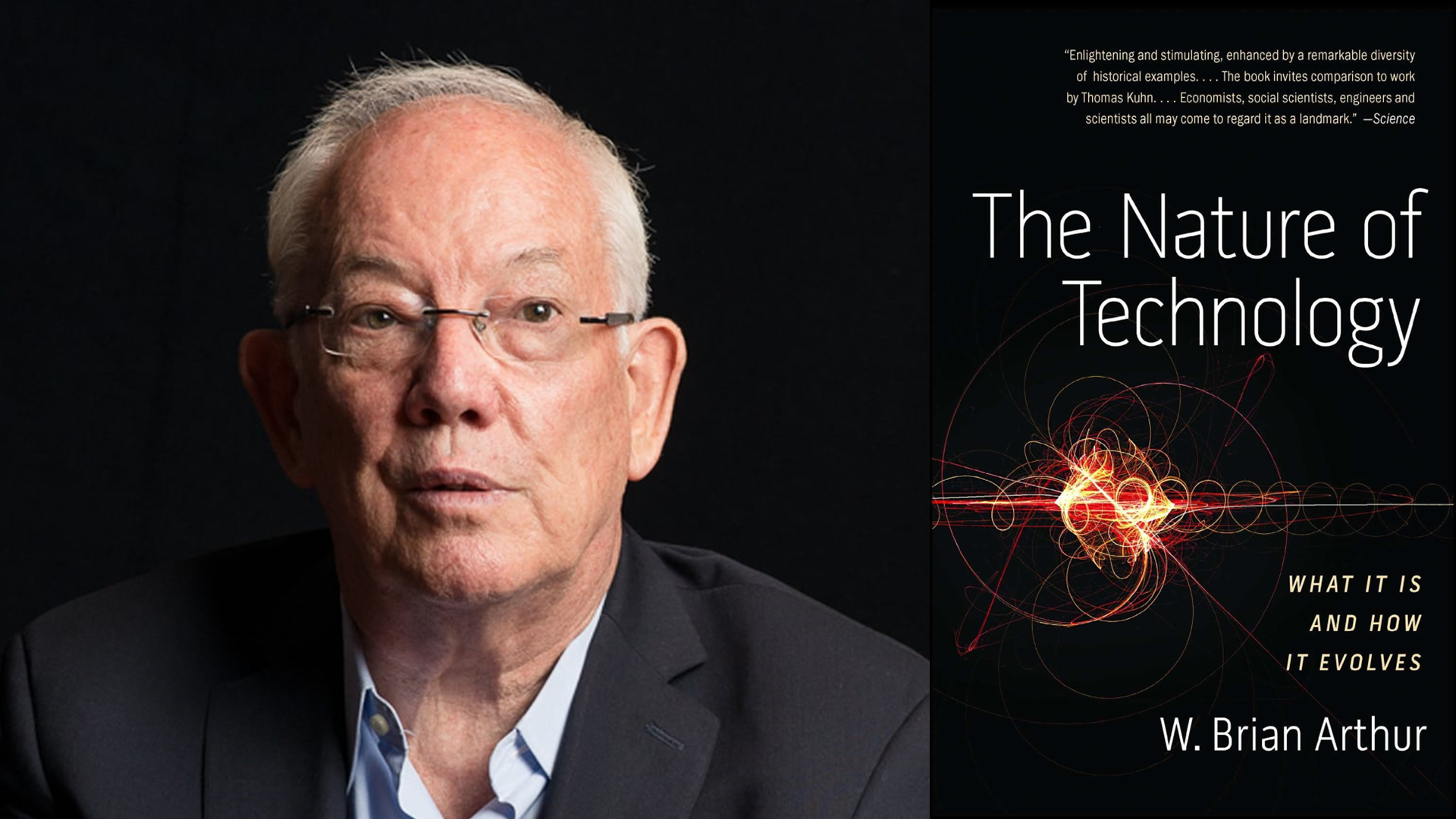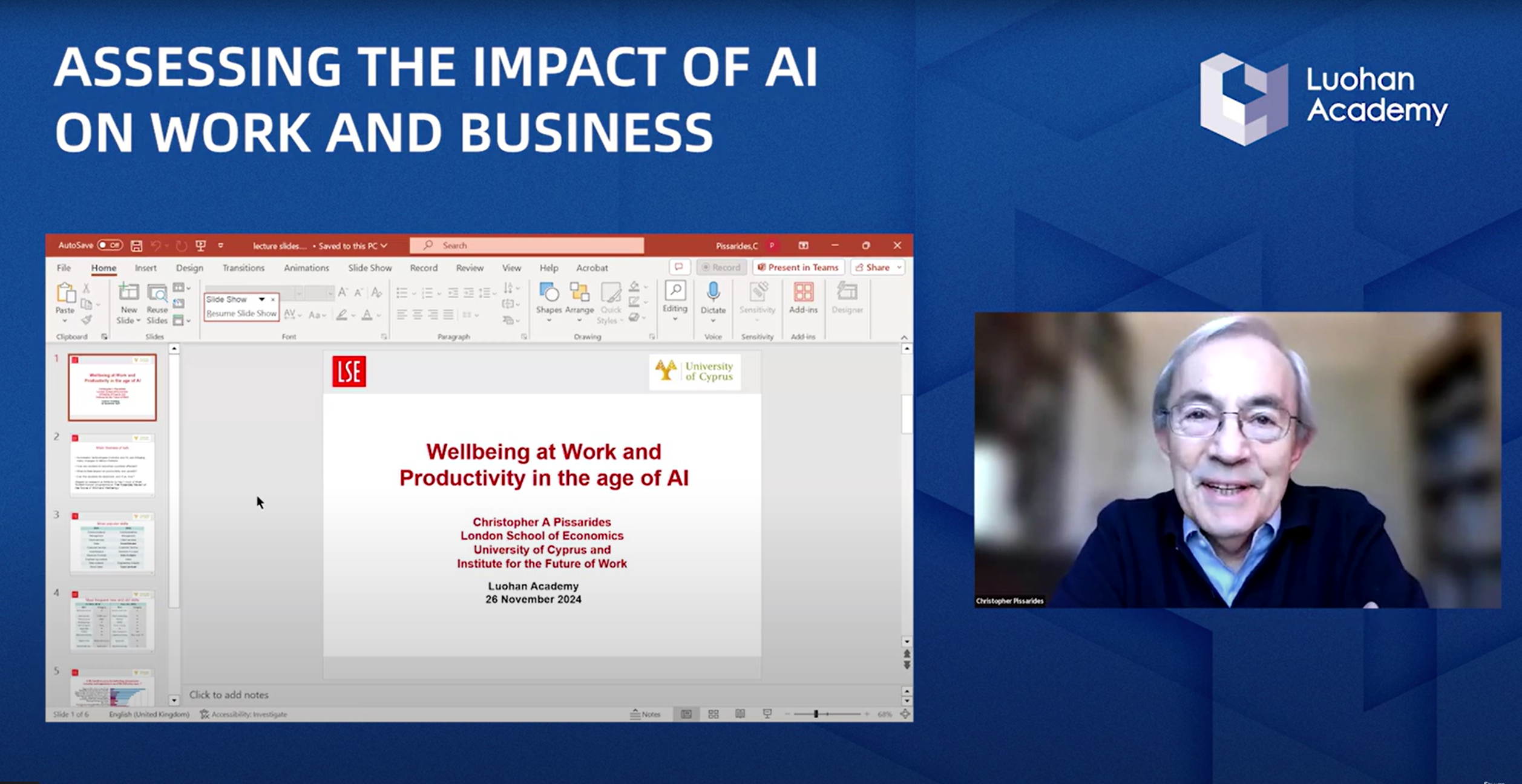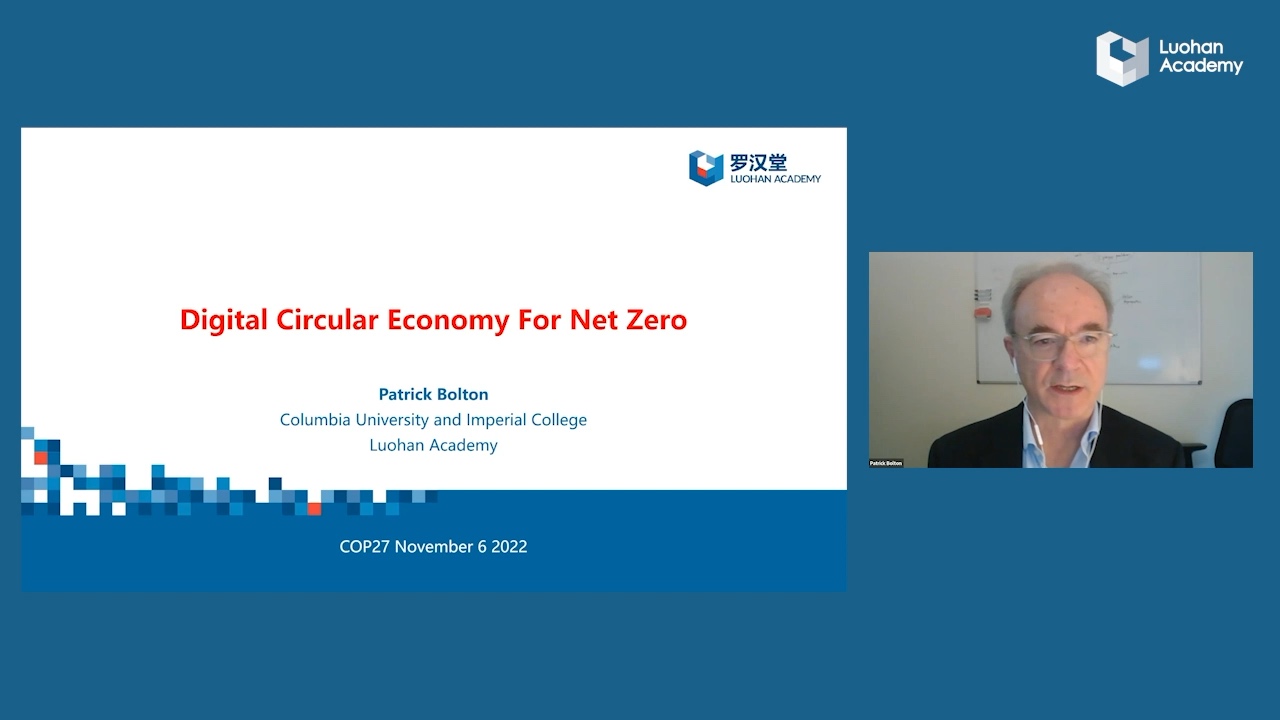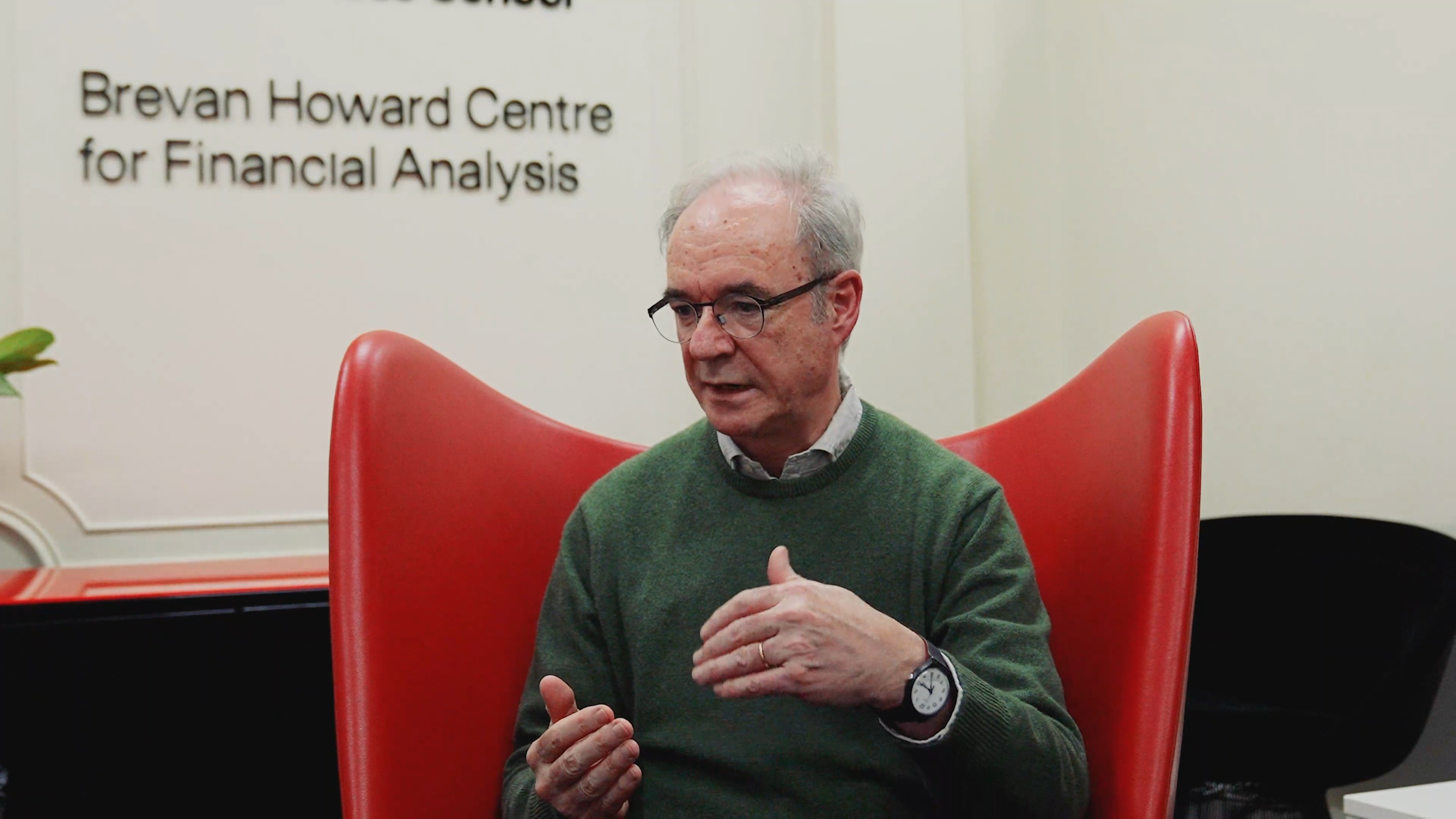Sir Christophe Pissarides is the School Professor of Economics & Political Science and Regius Professor of Economics at the London School of Economics. His research focuses on topics of macroeconomics, notably labor, economic growth, and economic policy. In 2010, he was awarded the Nobel Prize in Economics.
He talked about how data improves the efficiency of the labor market.
Transcript
Steve Tadelis:
Now, we're going to move to Chris Pissarides, who I assume is joining us from the U.K. Chris, take it away. You have eight minutes.
Christopher Pissarides:
Well, thank you very much, everybody. Especially to Long for steering this report to so many of us. It was a remarkable achievement. Looking at the final product, now, makes me feel proud to be part of it. Now, you heard about some problems, difficulties that Bengt just described the value of data, and Long's summary. I'm going to switch topics a little bit and talk to you about search economics and the value of data in that framework.
Now, I did learn a lot about value of data and other aspects of data from the report, but what's more, maybe, surprising, realizing you could maybe go back through my previous writings on search. I looked at it from a new perspective, in terms of value of data, and that's what I'm going to talk about.
Now, socioeconomics, as many of you will be familiar. We could say without exaggeration, I guess, that it was founded on imperfect information. The seminal piece of work that launched was the 1970 Phelps volume[1], which has several papers on the imperfect behavior, and the imperfect information and labor markets, output markets, and various other things.
There is a nice introduction by Edmund Phelps to that volume, which says that the small cost of information, and information imperfections, make people decide in a way that takes us away from the Walrasian economy and the law of one price. In fact, following that volume, elaborate models were developed of consumer searching of their prices, workers searching all their wage offers.
The objective at that time confirmed more or less what Phelps was saying. And Stigler, who should be mentioned, actually, here, as well. And the imperfect information and data that didn't tell you everything you wanted to know about products, locations, and so on, you get the law of one price breaks down, and you get a distribution of prices, both in output and labor markets.
Well, when the Phelps volume came out, I was finishing my undergraduate studies in Britain, at the University of Essex, in fact, when several people interested in imperfect information were there, including Bob Clower, who was a big influence. I thought, "Yeah, this is a good topic for a PhD." But then I soon realized that a lot of the exercises that were there at the time to look for price distributions were perhaps not the most interesting from the information point of view.
I thought what was more interesting, especially in labor markets, was the heterogeneity of products, or jobs and workers. In fact, Michael Spence hinted at that in his intervention, that jobs have many, many different attributes that are even very difficult to describe and then you experience them, and workers have many different skills. Very niche kind of skills that can be applied to different jobs.
Most of the search for a job, being a young graduate student at that time, I could tell from personal experience that what I cared about very much wasn't the wage. If I did, I wouldn't have gone into British academia. I could have gone just one mile down the road, to the city of London, and worked for a bank. It's more, "What type of job am I going to get that is going to give me the job satisfaction?"
Now, the idea here of search is that there are different types of jobs. A worker cares about things beyond, looks for a job, and then takes the job that satisfies the minimum requirements that that worker might put in whatever job he or she wants to have. Now, this is exactly where the value of data can be seen.
Before the internet, when you were looking for these jobs, what you would do would be to go in your local market, see what jobs are available. In fact, at the time, and this was made in the 1980s, so just before the internet came out, I tried to read some literature about how the unemployed find their jobs. In Britain, at least, the biggest source of job information was the pub, because if you were unemployed, you went to the pub.
Rather be out with your friends to forget this misfortune you have of unemployment. You talked about jobs. In fact, that provided more than 50% of job matches, were based on information given in the pub. Now, as you can imagine, the value of information in the pub is valuable as he was taking it. It wasn't exactly one that matched skills with the requirements of the job. Therefore, there were many mismatches at the time, and the mismatches led to a lot of turnovers of jobs.
In the theory, when we wanted to express that, we would draw what's known as the Beveridge curve. It gives you the points of equilibrium over a labor market equilibrium. It's a look at the points, of equilibrium points, and it shows you the relation between unemployment and vacancies that co-exist in equilibrium. The distance of the Beveridge curve from the axis, from the origin, shows the extent of mismatch – what we lose by not having enough information.
Now the internet comes along, search becomes easier, but there are still many mismatches because the cost of search of the internet is high. There is a lot of difficulty in describing jobs and people. So, in the beginning, at least in the 1990s, when the sites for job search were first made onto the internet, there wasn't much change in the Beveridge curve. You can go to Rob Shimer's website actually, where the first thing you see is the Beveridge curve and you'll see that the Beveridge curve didn't shift very much when the internet first came along.
Now, as opposed to now, instead of just firms saying, "I have a job," just declaring what job vacancies they have. As a job applicant, my history of jobs on the internet, firms write their history, I write what I like to do, what qualifications I have, formal and informal, describe in many ways what I did, and the company tells their mission, what workers they have, what kind of a history they've had in terms of investments and so on.
Then that immediately gives you a lot more information and that would improve the matching. I have to say, we still don't know how to describe, how to present this as good as possible, then there are still mismatches. There are still jobs that are taken with such insufficient information that they are given up after a while because they don't satisfy either side. But there has been an improvement.
Now, what this information does is that it narrows down my search domain where I'm searching. Therefore, it cuts down the cost of search. Job satisfaction should improve. In other words, my reservations of what's minimum acceptable rise. I get what looks like a better job to me. As a result, I'm less likely to quit. The firm is more likely to want to keep that worker, me or whatever.
What's the implication for the labor market equilibrium? Well, if you look at the Beveridge curve equilibrium, the co-existence of vacancies and employment, we should be observing less unemployment for any given quantity of vacancies in the market. In other words, the Beveridge curve should shift in, and we have been observing that to a large extent. The level of unemployment is the result the equilibrium should be lower. The actual rate of unemployment should be falling. And again, it has been falling. You need a lot more to prove that, that why it is due to the data, but at least the trends are going in the right direction. There should be less duration of search because I narrowed down my search and therefore, I find a job quickly.
That's especially to young people who are the ones who do the job shopping in the absence of information. That job turnover and job shopping by young people should go down. That's something that, as far as I know, it hasn't been tested very well, though on average, job turnover is going down, but there are many factors that I mentioned as the causes behind that, and I suppose in the United States and other countries.
Steve Tadelis:
I assume you'll be wrapping up now, Chris?
Christopher Pissarides:
Yes. And one final thing, which is so difficult, I don't know the answer, so I'll be very quick. What's the value of data in all that? Well, there, you already heard Bengt saying how difficult it is to mention it. I mean, just think of the value of data. It's virtually impossible to measure that value. First of all, we have the extra output that is skewed to better matches. Matches are more productive.
Second, we have the lower unemployment. So, unemployment is very costly to people as we know. There is a fiscal cost for unemployment benefit. That should be added on to the value of output. Then we have the lower turnover of labor within the firm. The cost of turnover is positive and if that's reduced, that is value of output.
By the time we calculate all those things and add them all up, you need enormous resources. But my feeling is that it's more than what we think. And in fact, it would be good for a graduate student to start measuring that, taking one thing at a time, for example, measure by how much job mismatch has fallen and how much output have we gained because of that. And then take one step at a time just to give us an idea of how valuable data is or are.
Thank you very much Steve, I stop here. I don't know if I've done my eight minutes or what.
Steve Tadelis:
You got those and then some, but thank you very much, Chris, for your thoughts. And Bengt and Chris, a fascinating discussion of the value of data and indeed just tapping onto one of Chris's final comments. If you just think about better matches of employees to firms and lower unemployment, yes, impossible to really measure, but clearly extremely high. And I love how Chris did what I only recently learned how to do, was just say, "Oh, and some graduate students should go and work on that because that's really the best way to make progress." So, thank you.
[1] Phelps, E. S., Phelps, M. P. of P. E. E. S., Alchian, A. A., Holt, C. C., Archibald, G. C., Mortensen, D. T., Lucas, R. E., Rapping, L. A., Winter, S. G., Gould, J. P., Gordon, D. F., Hynes, A., Nichols, D. A., Taubman, P. J., & Wilkinson, M. (1970). Microeconomic Foundations of Employment and Inflation Theory. Norton.
For more information, please visit Luohan Academy's youtube channel: Luohan Academy









